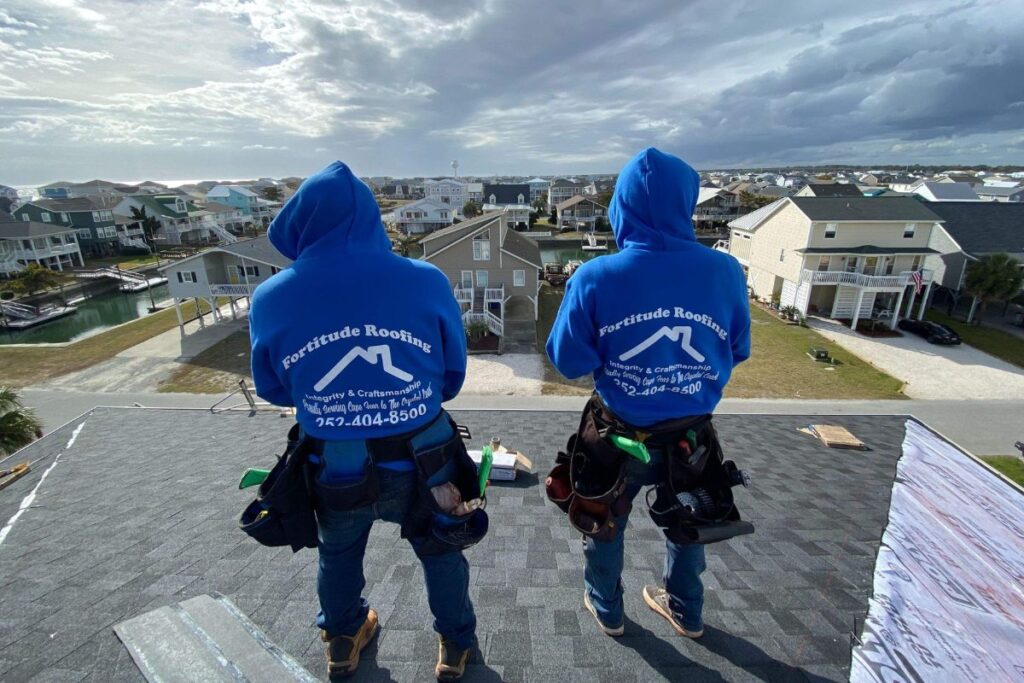Insurance Restoration Made Simple: 13 Steps to Handle Your Insurance Claim

Key Takeaways
- Insurance claims follow a standard step-by-step process that includes inspection, estimate, possible supplements, and staged payouts.
- Initial estimates can be disputed. A contractor can submit a supplement if additional work is needed that wasn’t included in the original estimate.
- Final payments are made after the work is complete and the final invoice is submitted—this includes depreciation and extra approved costs.
- Working with a contractor familiar with insurance restoration can help ensure nothing is missed and you get the full coverage you’re entitled to.
Navigating a home insurance claim can be stressful—especially when you’re dealing with roof damage after a major storm. Fortunately, understanding the claims process can help you avoid confusion, delays, and missed opportunities for coverage. While every insurance company operates a little differently, most follow a similar sequence of steps.
Here’s a breakdown of what typically happens during the insurance restoration process and how Fortitude Roofing can support you along the way.
Step-by-Step Breakdown of a Typical Insurance Claim
Claim Is Filed
The homeowner reports the damage to their insurance company to initiate a claim.
Inspection Is Scheduled
The insurance provider schedules a property inspection to assess the extent of the damage.
Initial Estimate Is Provided
About 7–10 business days after the inspection, the insurance company sends an estimate of damages to the homeowner.
Review of the Estimate
The homeowner and their contractor review the estimate to determine if it accurately reflects the work needed.
Supplement Request Prepared (If Needed)
If the estimate is incomplete or inaccurate, the contractor prepares a revised estimate—known as a supplement—for the homeowner to send to the insurance company.
Supplement Reviewed by Insurance
The insurance provider reviews the supplemental request.
Response Issued
The insurance company will either approve, deny, or modify the supplement request.
Updated Estimate Sent
Within 5–7 business days, the homeowner receives the revised estimate or appraisal reflecting the insurance company’s decision.
Final Review of Updated Estimate
The homeowner and contractor assess the new estimate to determine if it’s acceptable and covers the full scope of needed repairs.
Statement of Work Sent
If the estimate is acceptable, a signed Statement of Work (SOW) is submitted to the insurance company.
Initial Payout Issued
The insurance company sends the Actual Cash Value (ACV) payment, which is the depreciated value of the repairs, minus the deductible.
Repairs Are Completed
The roofing contractor completes the work based on the approved scope.
Final Invoice Submitted
Once the job is complete, the homeowner submits a final invoice to the insurance company. The insurer then releases the remaining funds—called the recoverable depreciation—along with any approved extra expenses, such as emergency tarp services.
Partner with Fortitude Roofing
At Fortitude Roofing, we work with homeowners every step of the way to ensure that your roof is repaired properly and that your insurance benefits are maximized. While we don’t act as public adjusters, we do assist in reviewing estimates, identifying missing repairs, and helping you communicate clearly with your insurer.
Our estimates are always free, and our team brings years of insurance restoration experience to every project. If you’re dealing with storm damage, give us a call at (252) 515-1016 to schedule a roof inspection today.
FAQs
1. What is a Statement of Work (SOW), and why is it important?
A Statement of Work is a signed agreement outlining the approved repairs. It’s required by the insurance company before they release the first payment.
2. Do I have to pay anything out of pocket?
Typically, homeowners are responsible for paying their deductible. Any additional costs should be covered through proper supplementing and final invoicing if approved.
3. What happens if hidden damage is found after repairs begin?
If unforeseen issues arise during construction, your contractor can submit a supplemental request to your insurance company to cover those additional repairs.